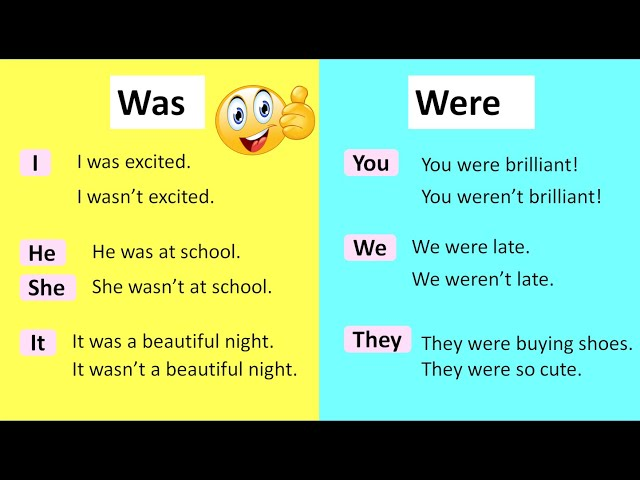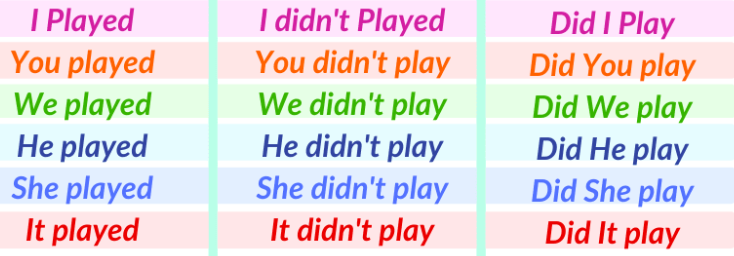Hello, today I would like to explain to you everything I understood about the simple past tense.
First when do we use the simple past tense?
Front my point of view is very important to explain that we used the simple past tense to refer to actions that were done in the past and no haven't connection with the present.
for example:
In present we say: I am a preschool student. ( if you were really sttudying preschool student but, you aren't a preschool student right now), So we need to say that in past simple , in others words you could say: I was a preschool student when I was 7 years old.
Now let's look at the structure of the past simple tense:
Remember that in present simple when the subject was third person is to say, he, she and it added letter "S" or "ES" But in this grammatical time it is a little easier why the verb will be the same for all subjects in the past time, the change depends on the verb and not the subject.
for example:
There is a exception is the verb TO BE wich has two forms; was and were.
A trick I learned to differentiate when we using were and when we using was, I saw it in a video some time ago, In the video the man explained that when there is more than one person in the subject that is to say the plural, we use WERE and when it was a single subject, I mean, the singular we use WAS except for the subject YOU in both plural and singular we use WERE.
for example:
Well, having explained this exception, let's continue with the past simple tense.
In the regular verbs normally just add ED to end the end of a regular verbs but there are many regular verbs that ends in E, you only need to add a letter D to the end,
But it's very important that you learn that verbs in past have three types of pronunciation:
Now, what would be the structure for the simple past?
In the picture you can see the different structures, but let's focus first on the general of regular verbs. The verbs in the past tense have some changes compared to the present simple tense that we have already mentioned, such as adding a "ED" or only "D" at the end of the verb, depending of the verb. We have also seen that the change of the verb hasn't with the subject but with the way the verb ends. In other words, the same way the verb is written in the past tense is for all subjects no matter if it's singular or plural.
Another change we can mention is that in the present simple we use two auxiliary "do" for the subjects "I, you, and we" and "does" for the subjects "she, he, and it" when we are referring to the question or its affirmative form. but in the simple past tense only use the auxiliary "DID" when we are refering to the question and affirmative form, but what happen with the negative form? in the present simple we use DONT for the subject "I , YOU and WE" and DOESN'T for the subjects "HE, SHE and IT"
for examples:
Afirmative Negative Question
Another important point to mention is that when we use the auxiliary "did" to refer to the past we do not need to change the base form of the verb.
In conclusion, the simple past tense is very easy if you learn all these grammatical rules and practice them,







.png)
Comentarios
Publicar un comentario